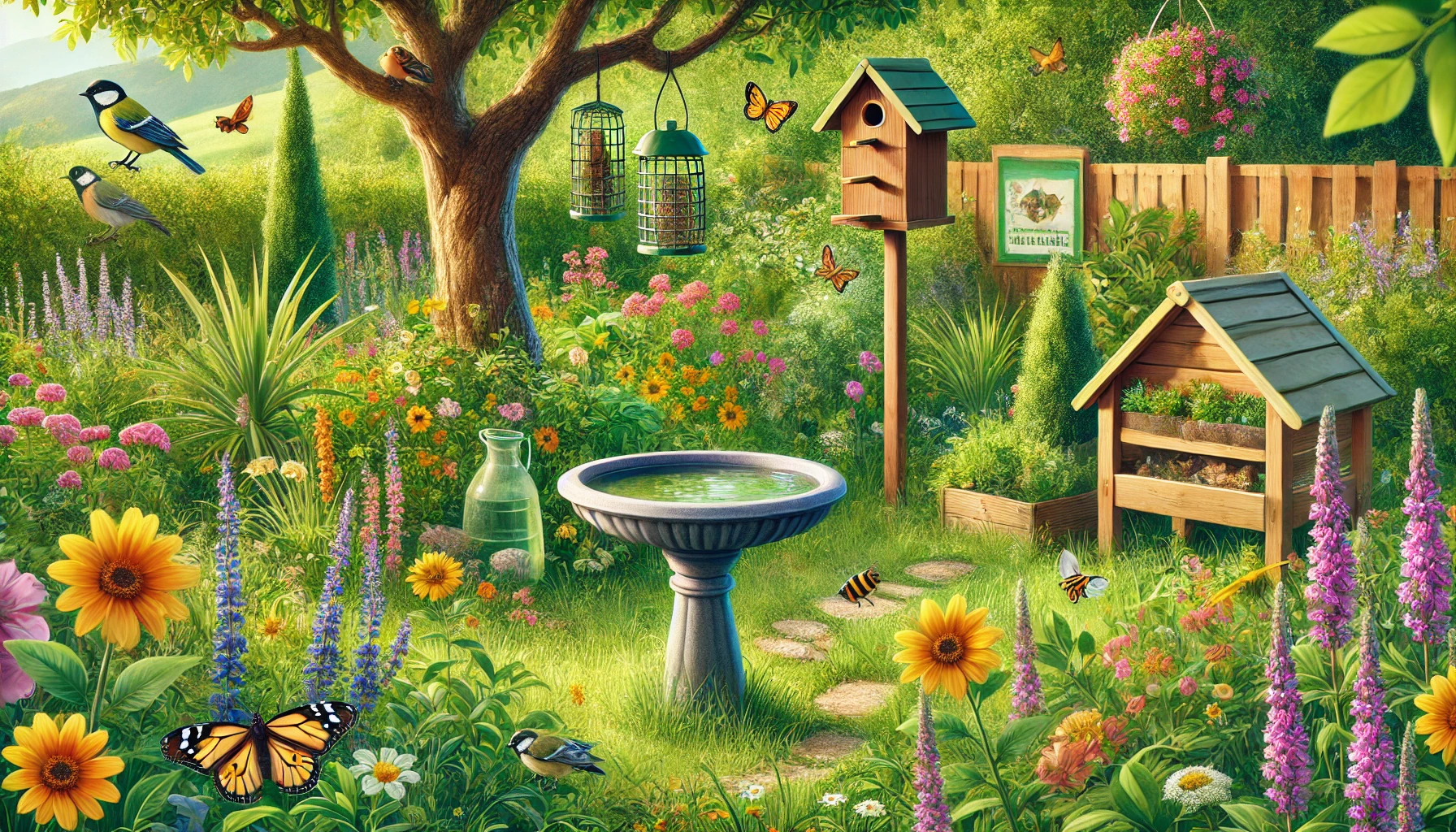A wildlife-friendly garden is not only a haven for local animals but also contributes to a thriving ecosystem. By providing food, shelter, and water for birds, insects, and other creatures, you can support biodiversity while enjoying the beauty of nature in your own backyard. This guide will help you design and maintain a garden that attracts and sustains wildlife.
Why Create a Wildlife-Friendly Garden?
- Supports Biodiversity: Provides habitats for pollinators, birds, and beneficial insects.
- Encourages Natural Pest Control: Attracting predators like ladybugs and birds helps manage pests.
- Enhances the Environment: Improves soil health, promotes pollination, and reduces the need for chemicals.
- Creates a Peaceful Space: Watching and interacting with wildlife adds tranquility and joy to your garden.
Steps to Create a Wildlife-Friendly Garden
1. Provide Diverse Plants
- Include a mix of native flowers, shrubs, and trees to offer food and shelter for different species.
- Use plants that bloom at different times to provide a continuous food source throughout the year.
2. Add Pollinator-Friendly Flowers
- Choose nectar-rich flowers to attract bees, butterflies, and other pollinators.
- Examples: Lavender, coneflowers, sunflowers, and wildflowers.
3. Create a Water Source
- Install a birdbath, small pond, or water dish with shallow edges for drinking and bathing.
- Add aquatic plants to ponds for shade and oxygen.
4. Provide Shelter
- Use dense shrubs, hedges, or brush piles to create natural hiding spots.
- Install birdhouses, bat boxes, or insect hotels to offer safe nesting spaces.
5. Avoid Chemical Pesticides and Herbicides
- Use natural pest control methods like companion planting or introducing beneficial insects.
- Allow your garden to maintain its own balance by attracting natural predators like birds and ladybugs.
6. Plant Trees and Shrubs
- Trees and shrubs provide nesting sites, shelter, and food for birds and insects.
- Examples: Hawthorn, holly, and elderberry are excellent choices for wildlife.
7. Let Areas Go Wild
- Designate a corner of your garden for wild growth. Let grass grow long and allow native plants to flourish.
8. Add Ground Cover
- Use ground cover plants like clover or ivy to provide habitats for insects and small animals.
Encouraging Specific Wildlife
1. Birds
- Offer bird feeders filled with seeds, suet, or nectar for hummingbirds.
- Plant berry-producing shrubs like elderberry or viburnum.
- Provide nesting boxes and clean them annually to encourage reuse.
2. Bees and Butterflies
- Grow native wildflowers and avoid double-petaled varieties that produce less nectar.
- Add milkweed for monarch butterflies and flowering herbs like thyme and mint for bees.
3. Hedgehogs and Small Mammals
- Leave small gaps in fences to allow wildlife to move freely.
- Create piles of leaves, logs, or compost for shelter and foraging.
4. Amphibians and Reptiles
- Build a small pond or leave shallow dishes of water in shaded areas.
- Add rock piles or logs for basking and hiding spots.
Maintaining a Wildlife-Friendly Garden
1. Monitor and Adjust
- Observe which animals visit your garden and adjust features to attract more wildlife.
- Add more food sources or shelter based on the needs of local species.
2. Provide Year-Round Care
- Keep bird feeders full in winter when natural food is scarce.
- Plant evergreens to provide shelter during colder months.
3. Avoid Overly Tidy Practices
- Leave seed heads on plants like sunflowers to provide food in winter.
- Allow leaves and fallen branches to remain for ground-dwelling creatures.
4. Reduce Artificial Lighting
- Minimize outdoor lights to avoid disrupting nocturnal wildlife like moths and bats.
Tips for Success
- Start Small: Focus on one or two features, like a bird feeder or pollinator garden, and expand as you gain experience.
- Use Native Plants: Native species are better suited to local wildlife and require less maintenance.
- Involve the Community: Share tips and encourage neighbors to create wildlife-friendly spaces, creating a network of habitats.
Conclusion
Creating a wildlife-friendly garden is a rewarding way to connect with nature while supporting local ecosystems. By providing food, water, and shelter, you can transform your outdoor space into a sanctuary for a variety of creatures. Whether you have a small backyard or a large property, these steps will help you enjoy a vibrant and sustainable garden.
